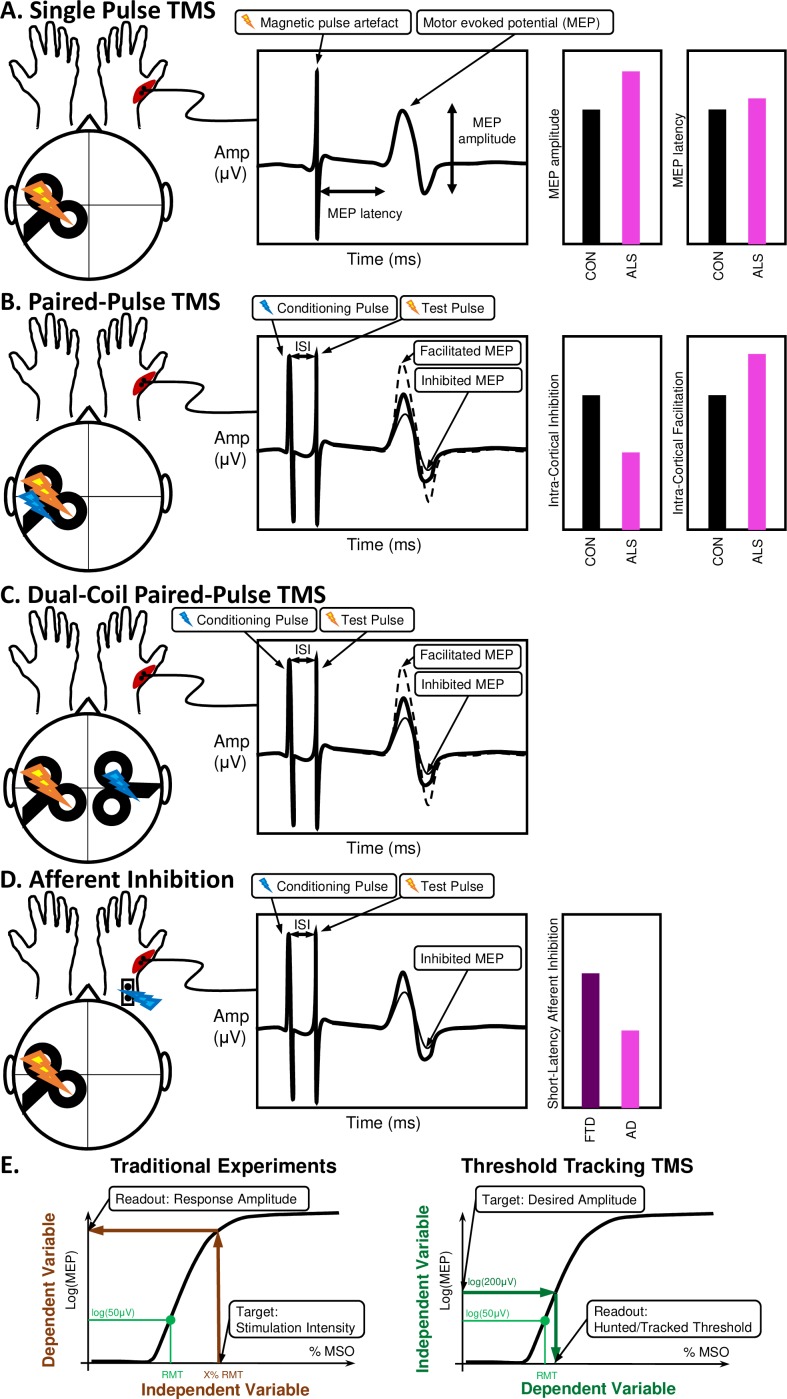Figure 3.
Transcranial magnetic stimulation (TMS) can provide: (A) single-pulse measures, (B) paired-pulse measures, (C) dual-coil paired pulse measures and (D) afferent inhibition measures that when combined with (E) threshold tracking can quantify network connectivity changes in the motor system. The test pulse generates a motor evoked potential (MEP) whose delay and amplitude can be used for quantifying the excitability and conduction in the motor circuits and pathways. This is usually achieved by conditioning the MEP with sub-maximal or supra-maximal conditioning pulses delivered at specific interstimulus intervals before the main test pulse (either in the same brain region with the same coil, over another brain region with a second coil or by peripheral nerve stimulation). This conditioning may facilitate or inhibit the MEP, depending on the (inter-)neuronal populations engaged in each paradigm, the ISI and stimulation intensities or thresholds used. These measures have been proved useful for diagnosis and response prediction in neurodegeneration, eg, in ALS4 and AD.30 The threshold tracking method is used to achieve a less variable quantification of the stimulus-response characteristics by targeting a specific desired amplitude rather than a specific stimulation intensity. AD, Alzheimer’s disease; ALS, amyotrophic lateral sclerosis; MSO, maximum stimulator output; ISI, inter-stimulus interval.

